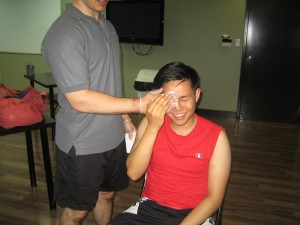Overview
With short-sightedness, a person will find that distant objects appear blurry, but if an object is close, they can see it just fine. This is an eye issue that affects one out of three people, showing that this is very common. Those who have short sighted vision can have a mild case, or a more serious case in which their vision is greatly affected. In most cases, this vision issue starts at puberty and gets worse as the person ages. However, it can occur in young children as well. Signs that your child may be struggling with short-sightedness includes:
- Sitting close to the television
- Needing to sit at the front of a classroom to see the board
- Complaining about eyes feeling tired or having a headache
With short-sightedness, a person will find that distant objects appear blurry, but if an object is close, they can see this just fine. - Regularly rubbing their eyes
Eye Tests
If you do believe that your child is struggling with vision issues, then you should be scheduling a visit with an eye doctor. A routine eye test is done every two years, but if you ever believe that there is a problem, you should visit an eye doctor. An eye test is going to confirm whether there is a short or long sighted vision issue and utilize glasses or contacts to correct this issue. In many cases, the NHS provides free eyes tests for children who are under the age of 16, or for kids who are under the age of 19 and are enrolled in school full time.
Causes of Short-Sightedness
- Often this occurs when the eyes grow too long, this means that the retina in the back of the eye cannot focus on light properly. Instead, distant objects appear blurred.
- This issue does run in families and has also been linked to those who focus on nearby objects for long periods of time such as books and computers.
- They believe that allowing a child to spend ample amount outside can help reduce the risk of this happening.
Treating Short-Sightedness
There are numerous treatments including:
- Corrective lenses, such as glasses or contact lenses that can help you to focus on distant objects
- Laster eye surgery to help alter the shape of the eye, but is not usually performed on children since their eyes are still developing
- Artificial lens implants: these are lenses that are permanently put into the eye to help them focus automatically
There are a few conditions that are associated with being short sighted, including:
- A squint: in which the eyes point in different directions, very common in children
- A lazy eye: this occurs when the vision in one way does not develop properly
Related Video On Short-sightedness

